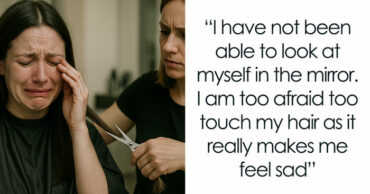
True Detective‘s inaugural season can be divided into two distinct parts: the profoundly existential first half and the relatively conventional murder mystery in the latter four episodes. The second half of the season, set in the deep south, is a stark contrast to the first, with significant shifts in tone, focus, and time leaps. This divergence ultimately diminishes the show’s overall impact.
Identifying the Turning Point
The show’s transformation can be traced back to the episode “The Secret Fate of All Life,” which abandons subtlety in character and narrative development as it hurtles towards its conclusion. However, the true catalyst for the show’s latter half comes an episode earlier, during the series’ most famous scene: the six-minute tracking shot through a Louisiana borough.
There’s no denying the brilliance of Cary Fukanaga’s signature shot in True Detective. The meticulous planning and execution of this complex, chaotic sequence are nothing short of impressive. This kinetic scene marks a departure from Rust Cohle’s lengthy monologues on human nature and evolution, setting the stage for the less nuanced, conspiracy-laden final episodes, which culminate in another shootout and fistfight.

The Aftermath of the Tracking Shot
The tracking shot ushers in a series of changes for True Detective. Cohle’s past is suddenly thrust into the spotlight, feeling forced and out of place within the show’s larger narrative. This detour into Cohle’s darker, more Western-esque character traits (pre-handlebar mustache) is an indulgence the show can ill afford, especially considering the time it later spends glossing over crucial life events.
The impact of these changes is even more jarring when binge-watching the show. The adrenaline from the end of “Who Goes There” barely fades before True Detective starts time-hopping and introducing romantic dramas (with poorly developed female characters). As the show delves deeper into darkness, gunshots become more frequent, and a vague political conspiracy emerges out of nowhere, culminating in the detectives taking out a cemetery groundskeeper.
A Pivotal Moment for True Detective
Although the tracking shot itself doesn’t directly alter True Detective‘s storyline, it serves as a crucial turning point for the show. As the gunshots in the neighborhood grow louder and Cohle’s well-aimed punches take down adversaries, the show loses its grip on its own construction. It abandons its philosophical underpinnings in favor of a more conventional (and arguably inferior) story about a bizarre, incestuous killer with a penchant for murdering women in symbolic ways. This is hardly what True Detective initially set out to be, and despite the thrill of watching Rust navigate a chaotic situation, the tracking shot marks an unfortunate turning point for the season.
Photos via HBO
 Follow Us
Follow Us





